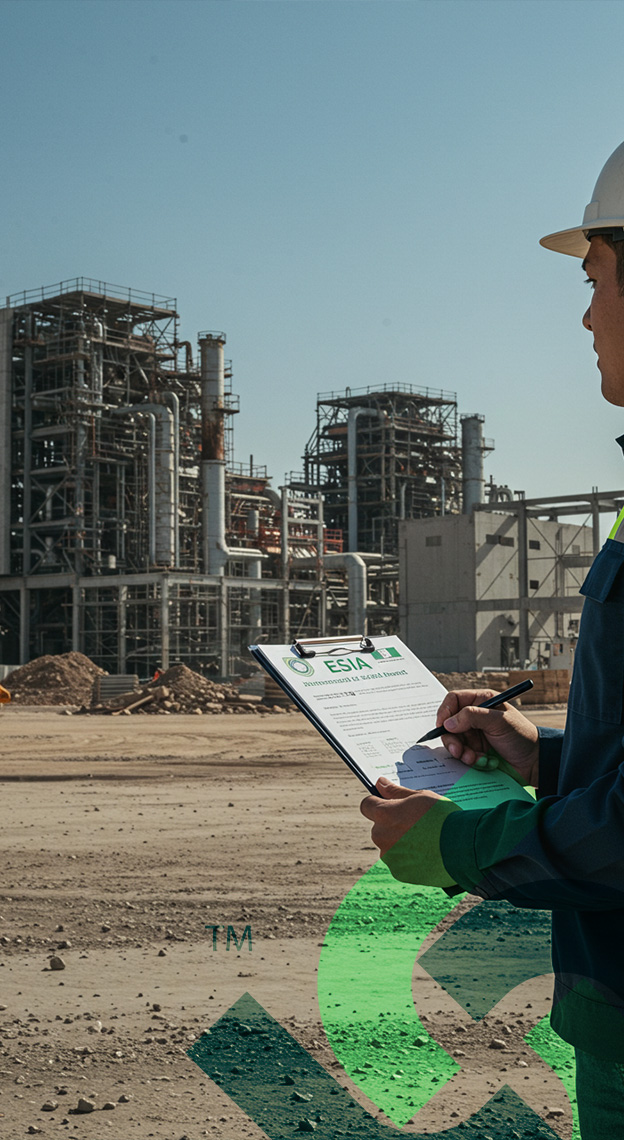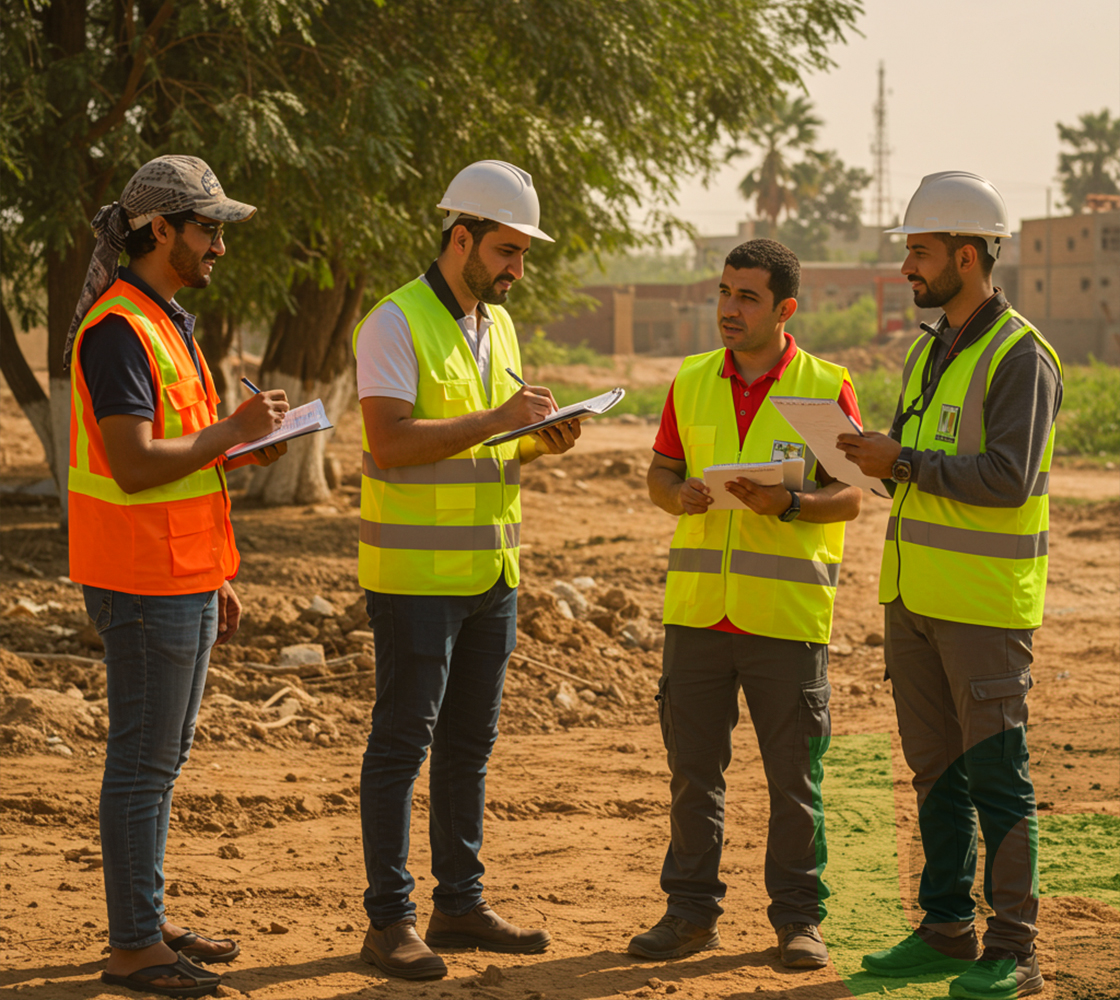These studies are concerned with analyzing and evaluating the potential impacts of projects on the environment and the surrounding community. This process includes examining relevant environmental and social aspects, proposing appropriate solutions and measures to mitigate negative impacts, addressing pollution sources if any, and maximizing the project’s positive outcomes.
The assessment process involves preparing studies, reports, forms, or environmental permits depending on the screening, scale, and nature of the project, as well as its level of impact. It paves the way for obtaining the necessary environmental approvals and helps ensure compliance with environmental regulations and executive bylaws of the Environment Public Authority in the State of Kuwait, as well as relevant local and international laws and regulations.


Environmental Protection:
By identifying potential harms that may affect air, water, soil, and ecosystems.
Community Safeguarding:
By studying impacts on populations, living standards, public health, and working conditions.
Informed Decision-making:
Through accurate data that helps improve project design and reduce its impacts.
Legal Compliance:
Ensures that the project aligns with national and international environmental and social legislation.
Transparency and community participation: Engaging stakeholders and the public in the assessment process and allowing them to provide feedback.
Sustainability Achievement:
By implementing projects that consider environmental and social dimensions and minimize negative impacts.
The Environmental and Social Impact Assessment goes through a series of systematic phases aimed at identifying, analyzing, and mitigating potential environmental and social impacts of any project. The key phases include:
Preliminary Phase: (Project definition – Baseline data collection – Legal framework analysis)
Scoping: Identifying key environmental and social issues requiring detailed study and involving stakeholders to identify expectations and concerns
Environmental and Social Impact Analysis:
• Studying the impacts on natural resources (air, water, soil, vegetation, biodiversity)
• Conducting environmental surveys and tests to collect accurate data on air quality, noise, wind, soil, water, and vegetation to assess the site’s environmental condition
• Evaluating social impacts on surrounding communities, including health, livelihood, and more
• Identifying types of waste and designing effective plans for safe collection, treatment, and disposal in accordance with environmental standards
Preparation of the ESIA Document:
• Presenting environmental and social analysis results
• Analyzing project alternatives in terms of location, designs, materials, and more
• Preparing mitigation measures for anticipated environmental and social impacts
Environmental and Social Management Plan (EMP):
(Preventive and corrective actions – Environmental monitoring and evaluation mechanisms – Defining and distributing responsibilities – Timetables and emergency plans – Training and awareness programs)
Recommendations:
(Suggestions to enhance environmental and social aspects and reduce potential project impacts)
Review and Approval:
(Submitting the report to relevant authorities, following up on feedback, and securing approval or implementing required modifications)
Let’s Get Started
Environmental and Social Impact Assessment (ESIA) studies
Environmental and Social Impact Assessment (ESIA) reports
Environmental and Social Impact Assessment (ESIA) forms
Environmental permits
Current environmental status assessment
Sustainable Solutions Environmental Consultancy is your trusted partner for impact assessment and management at the highest standards.